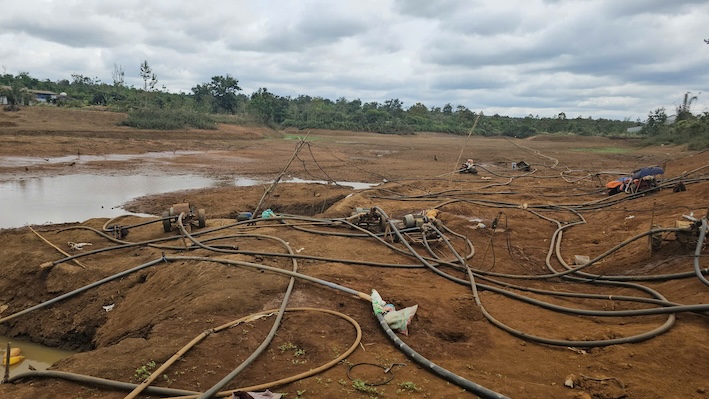According to information from the Department of Irrigation Works Management and Construction (Ministry of Agriculture and Environment), during the week from April 5-11, in the Central Highlands, the average capacity of irrigation reservoirs only reached 40% of the designed capacity, down 5% compared to the previous week. Specifically by province such as: Kon Tum 42%, Gia Lai 33%, Dak Lak 37%, Dak Nong 47%, Lam Dong 71%. The whole region currently has 48 dry lakes including: Kon Tum province has 10 lakes, Dak Lak province has 21 lakes; Dak Nong province has 17 lakes.


In particular, some areas have experienced drought and water shortage. Specifically, in Gia Lai province, there are 152.67 hectares of rice (accounting for 0.6% of the total rice production area of the province) outside the irrigation areas of irrigation systems in Dak Doa district (76.03 hectares), Chu Se district (59.14 hectares), Kbang 3 district (17.5 hectares) that are in drought. This cultivated area has been recommended not to produce in the 2024-2025 Winter-Spring crop since the beginning of the crop because the water source will not ensure water supply for production.
Other localities have not recorded the area of damage caused by drought and water shortage.
The Department of Irrigation Works Management and Construction forecasts that from now until the end of April 2025, in the Central Highlands, there will be about 3,500 case-olds with the risk of drought and water shortage. Of which, Kon Tum province is about 200-300 hectares, Gia Lai province is 300-1,200 hectares; Dak Lak province is 2,000-3,000 hectares, Dak Nong province is 1,000-2,000 hectares. The total area that could be affected by drought is about 1,000-3,000 hectares.
In addition, the Department of Management and Construction also provided more information about the water level in irrigation lakes across the country. At present, the water level in irrigation reservoirs is decreasing compared to last week. In the Northern region, the average capacity of irrigation reservoirs reached 54.8% of the designed capacity, down 3.0% compared to last week.
In the North Central region, the average regional irrigation reservoir capacity reaches 62.5% of the design capacity, 2% lower than the previous week. In the South Central region, the average capacity of irrigation reservoirs reached 78% of the design capacity, down 2% compared to the previous week. In the Southeast region, the average capacity of irrigation reservoirs reached 62.1% of the design capacity, 1.0% lower than the previous week.
Previously, the Department of Irrigation Works Management and Construction also commented that in general, areas across the country basically ensure water for agricultural production in April 2025. The drought and water shortage only occur locally in some areas in the Central Highlands and the South and are most affected at the end of the dry season (April).











